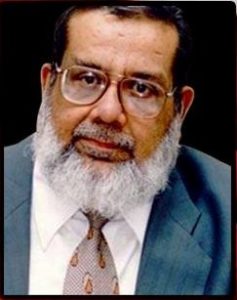There are many people in out country who have made Pakistan as one of the developing countries in the world with their skills,tributes and experiences. Pakistan is not counted in the numbers of very rich countries because its being targeted by Terrorism and has no Continuous development. Though, Pakistan is ranked amongst the poorest countries in the world. However, there are still some rich Personalities present in Pakistan. Here is the list of top 10 Wealthy people of Pakistan in 2014.
1. Shahid Khan
Net Worth: $3.8 Billion
Sources: Flex – N – Gate, Jacksonville Jaguars, Fulham F.C
Shahid Khan is known as the Pakistani born American Billionaire. He owns Jacksonville Jaguars which worth $770 Million, plus a team in English Premier League ‘Fulham F.C’ which worth $300 Million and also He is the owner of Flex – N – Gate. He is the Richest person of Pakistan. He is presently living in USA. His main source of earnings are from the business of Auto parts manufacturing. He is counted as the 490th richest person in the world.
2. Mian Muhammad Mansha
Net Worth: $2.5 Billion
Sources: Nishat Group, MCB Ltd, Adamjee Group, Nishat Chiniot Power
Mian Mohammad Mansha is the 2nd richest person of Pakistan as He is the Chairman and CEO of MCB Ltd, Adamjee Group and Nishat Group. He is one of the leading Pakistani business man and billionaire. He is currently known as the most powerful personality of Pakistan and his net worth is $2.5 Billion. He is counted as 937th richest person in the world.
3. Asif Ali Zardari
Net Worth: $1.8 Billion
Sources: Diversified, Agriculture, Politics And Government
Asif Ali Zardari the former President of Pakistan and co-chairman of Pakistan People’s Party (PPP) deserves to be on 3rd spot of this list. He became famous as after he married to Benazir Bhutto in 1987. He is also known as the powerful person of Pakistan. His net worth is $1.8 Billion.
4. Sir Anwar Parvez O.B.E
Net Worth: $1.5 Billion
Sources: United Bank Limited And Bestway Group
He is the founder and chairman of Bestway Group which is known as the country’s second largest cement producer and 16th largest cash and carry operator in UK, and also he is the Deputy Chairman of United Bank Limited Pakistan. He is one of the renowned investor. He is known as the great businessman in the country. His net worth is $1.5 Billion.
5. Nawaz Sharif
Net Worth: $1.4 Billion
Sources: Iteffaq Group and Sharif Group
He is currently the Prime Minister of Pakistan and the leader of country’s largest political party Pakistan Muslim League (N). He is just not a successful politician, but also a successful industrialist. He is the owner of Unit Group, Sharif Group and Itefaq Group which is known as the most leading business steel goods. He is the 2nd most successful politician of Pakistan and 5th richest person of Pakistan with $1.4 Billion worth.
6. Saddaruddin Hashwani
Net Worth: $1.1 Billion
Sources: Marriott Hotel, Pearl Continental Hotel, Orient Petroleum
He is the chairman of Hashoo Group, and well known of his Marriott Hotel franchise which is been a great achievement for Hashoo Group. Hasho Group has founded the famous hotels like Marriott and Pearl Continental Hotels He is ranked as the 6th richest person in Pakistan.
7. Nasir Schon
Net Worth: $1 Billion
Sources: Schon Group
He is currently the CEO of Schon Group which owns Pak-China Fertizilers, Schon Bank, Schon Textiles. He is known as the business leader of Pakistan. Also he is the first Pakistani to own a Rolls-Royce. Currently, he is working a project called ‘Dubai Lagoon’. He holds the 7th spot in the list of most richest people of Pakistan.
8. Abdul Razzaq Yaqoob
Net Worth: $1 Billion
Sources: ARY Group
He started his business in Dubai in earlier 60’s and achieved lot of success. He is currently the Owner of ARY Group. He has even expanded his business in the shape of outlets in Islamabad, Karachi and Dubai and run more than 40 outlets which deals in gold. He is at the 8th spot in the list of richest people of Pakistan.
9. Malik Riaz Hussain
Net Worth: $1.1 Billion
Sources: Bahria Town
He is one of the most famous personality of Pakistan. He owns the Asia’s best and largest real estate company where everything looks safe and reliable. His net worth in 2014 is around $1 Billion, but maybe its over $2 Billion.
10. Tariq Saigol
Net Worth: $850 Million
Sources: Saigol Group, Kohinoor Textile Mills, Pak Electron Limited, Saigol Motors, Sajeel Motors
Here is the last wealthy person in this list but he is not the least one. He is eldest one in three brothers and owns the Saigol Group and Kohinoor-Maple group.. His net worth is around $850 Million currently.












